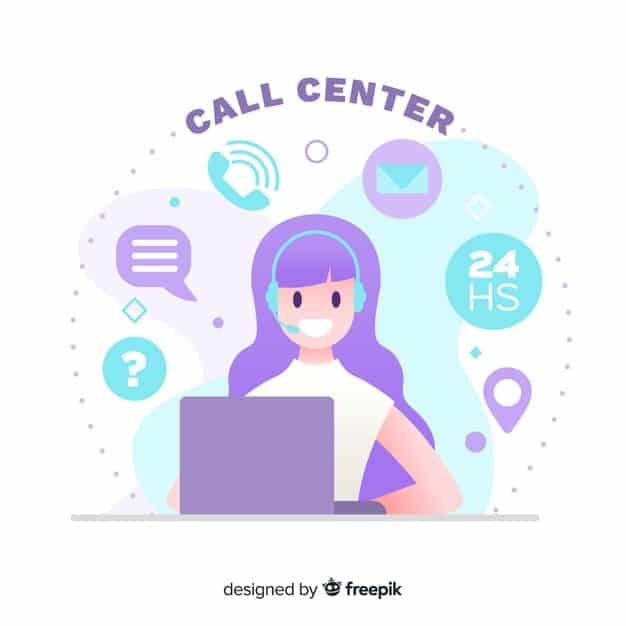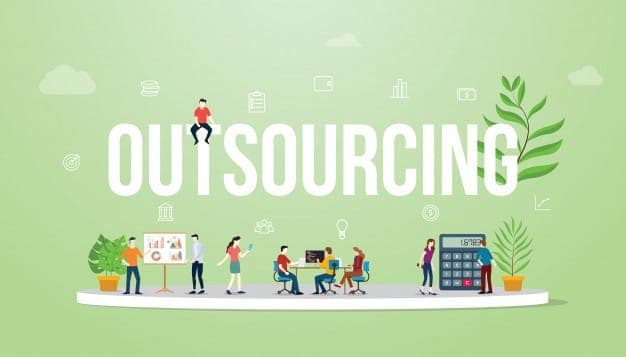When it comes to resolving issues with a company, customers still prefer to speak on the phone. A 2020 consumer report from Zendesk highlighted that 66% of respondents identified the phone as their preferred channel for support – making voice the most relevant communication channel for any age group.
Phone sales and support aren’t going anywhere anytime soon, which is why call centers still play such a pivotal role in the customer experience.
Customer satisfaction depends heavily on the experience provided by call center agents, so it’s important for call centers to maintain high service levels that sustain loyal customer relationships.
Setting up a call center, however, can be a tedious and time-consuming process with plenty of opportunities for missteps along the way.
In this step-by-step guide on how to set up a call center, we break everything down, so you can pursue your call center endeavours with confidence – and avoid common mistakes that companies make.
1. Identify The Purpose

Before getting into call center setup details, you must first establish its purpose by answering the question, “Why does my business need a call center?”
If you are not clear on the purpose of your call center, you won’t get to where you want to be. Some companies fail to establish a clear purpose from the beginning for their call center, which is a critical mistake. Getting your team aligned on the purpose of your call center, goals, and how you will reach those goals will help you achieve greater success.
The purpose of your call center will become your guide and will vary based on the specific needs of your business. Some common reasons why you may want to set up a call center include:
- Increase the efficiency and productivity of your team
- Optimize lead generation or streamline other value-added services
- Boost customer satisfaction to enhance the overall customer experience
It’s important to note that ‘call centers’ and ‘contact centers’, while commonly exchanged, are not the same. Understanding the differences between the two is critical because the purpose and goals for each will likely differ.
2. Define Your Success Criteria
Next up on the call center requirements checklist is to define your success criteria.
Once your purpose and goals are set, call center metrics will serve as key performance indicators (KPIs) to monitor the overall health and success of your call center.
Some companies make the mistake of only focusing on metrics that are easy to track, but it is also critical to focus on metrics that meet the purpose of your call center and help you achieve greater customer satisfaction, such as first contact resolution.
Common Call Center KPIs
- Abandonment Rate: Percentage hang-ups while waiting to speak to an agent.
- Average After-Call Work Time: Average time an agent spends on post-call work.
- Average Handle Time (AHT): Average time an agent spends on a call.
- Average Talk Time: Average time between an agent answering and hanging up.
- Average Speed of Answer (ASA): Average time it takes customers to reach an agent once they’re routed to the right department and placed in a queue.
- Cost Per Call (CPC): Average cost of each call.
- First Contact Resolution (FCR): Measures the number of problems that are solved during the first contact.
Establishing clear KPIs ensures that agent performance and call center software are equitable, and helps identify areas for improvement – all of which are critical call center setup requirements.
3. Establish a Budget
Without a budget, you can’t confidently decide which type of call center is best for your business.
Consult with your team, compile costs, income, and variable expenses, and determine how much money your organization can reasonably spend setting up a call center.
A budget is a pivotal part of how to setup a call center, because it determines financial feasibility and critical aspects of how your call center will operate, such as facility size and location, headcount, technology, and more.
4. Choose a Call Center Type

Based on your purpose, goals, and budget, you can now decide which type of call center is best for your business.
With several options to consider, we’ve broken it down to help you decide:
On-site vs Virtual Call Center
Do you require a physical facility for in-house staff and equipment? Or are you looking to increase flexibility with a remote workforce and cloud based solutions?
Both options offer unique benefits depending on the priorities of your organization.
On-site call centers are physical facilities where all staff and equipment are located in one place. Benefits include:
- Quick, in-person communication that makes it easy to resolve issues fast.
- Real-time technology updates and training to help maximize adoption and mitigate risk
- Optimal connectivity with hardwired setups to increase call quality in areas with a poor Internet connection.
Virtual call centers are cloud based and can be accessed via the Internet from anywhere in the world. Call center agents work remotely and all equipment is located in the cloud. Benefits include:
- Access to a wider remote talent pool eliminates geographic restrictions, so you can find the most qualified and experienced candidates regardless of location.
- Increase diversity and availability by employing agents in different countries and timezones to enhance your multilingual offerings and availability.
- No facility expenses, which makes this a more cost-effective option and allows you to invest more in other areas of your call center. Keep in mind that virtual call centers require additional support and resources to mitigate remote workforce communication barriers and keep staff engaged.
There’s also a hybrid model with both on-site and virtual options, which some businesses prefer for increased security and flexibility.
Inbound vs. Outbound
Will your call center focus more on sales or revenue functions? Or is it focused more on supporting customers and resolving issues?
Answering those questions will tell you the type of call center services your business needs – inbound, outbound, or a hybrid combination of both.
Inbound call centers are typically run by support teams who handle incoming calls to help customers solve product or service issues.
Outbound call centers are typically run by sales teams who make outgoing calls to sell a product or service, collect feedback or market data.
There’s also a hybrid model that provides both inbound and outbound services, which some businesses prefer for a more consistent and unified customer experience.
5. Assemble a Strong Team
Once you’ve chosen your call center type, the next step is to assemble a top-tier team.
Hire The Right People

A call center’s success relies exclusively on its employees, which means it’s imperative that you have a clear understanding of your needs.
Start by compiling a list of ideal traits by role. For example, things to consider when hiring call center agents might be:
- What hours do they need to be available?
- What language(s) must they be fluent in?
- How much prior experience do they need?
By answering questions like these, you can develop ideal candidate profiles for each role in your call center to streamline recruiting and hiring.
Train Your People For Success
While a solid organizational structure and team act as the foundation for success, proper ongoing training is key. Some companies see training as a one-time occurrence, but ongoing training will help call center agents better adapt to change and improve their performance.
Set your people up for success by providing them with the right tools and training they need to do their jobs effectively.
Create an onboarding process for management staff to implement. This should include the following:
- Clearly defined tasks
- Support check-ins
- Milestones
- And surveys to ensure agents get up-to-speed quickly with optimal adoption, engagement, and satisfaction
6. Choose Your Technology
 Some companies make the mistake of focusing too much on reducing expenses and not enough on investing in effective technology that is beneficial for both their customers and their business.
Some companies make the mistake of focusing too much on reducing expenses and not enough on investing in effective technology that is beneficial for both their customers and their business.
While having stable, high-speed Internet is a basic requirement for all call centers, there’s plenty of other technology call centers need that you might not know about. For a full list, check out our Complete Guide to Call Center Technology.
Choosing the right technology isn’t just important for functionality, it’s also critical for your budget. Call center technology and tools can get expensive fast, which is another reason why so many businesses outsource.
Instead of incurring additional expenses for tech licensing fees, setup, implementations, integrations, and professional services – not to mention changing, migrating, or upgrading each time customer expectations evolve – the right call center provider will handle everything for you.
7. Concentrate on Culture
There’s a lot that happens in a call center on a day-to-day basis, so it’s easy for employees to feel overwhelmed, disconnected or unsupported.
Strong leadership is vital for call center culture, and an engaging and supportive atmosphere goes a long way with agents who are flooded with calls and constant challenges.
Focus on investing in your people and giving them a great work environment. Doing this will help deflate call center costs by reducing attrition, so you can retain and hire top-tier employees who contribute to your call center’s success. Follow our #callcenterculturetips hashtag on social media for ongoing advice, ideas, and inspiration.
Consider a BPO Call Center Partner

A Business Process Outsourcer (BPO) is an external vendor or service provider that shares or handles certain business operations through a process called Business Processing Outsourcing.
Outsourcing is ideal for organizations that lack time and resources, and who need immediate support. When call volumes extend beyond what your internal staff can support, it may be a smart and cost-effective option to consider a BPO.
Outsourcing your call center comes with quite a few advantages. Your customers are supported by a team of professionals, so you don’t have to stress and allocate additional time and resources to hire, train, and manage an entire operation yourself.
With a wide range of outsourcing services for both inbound and outbound functions, partnering with a BPO really is one of the easiest and most cost-effective call center solutions.
Outsource Your Call Center Management To A Trusted Provider
 When it comes to outsourcing your call center, it’s key that you work with a provider who can meet your business’ call center needs and drive business growth.
When it comes to outsourcing your call center, it’s key that you work with a provider who can meet your business’ call center needs and drive business growth.
For over three decades, Humach has provided award-winning call center solutions and superior customer experiences. We can implement, design, and fully manage your call center; saving you time and money over the long-term.
Humach offers a range of scalable and customizable call center models to suit your specific call center needs, including the:
- Humach-at-Home agent model
- AI-powered Digital Agents
- On-premise offerings
These customized call center services and solutions allow you to achieve your business goals, while you only pay for the services that you truly need.
If you are interested in learning how Humach’s tailored call center solutions can benefit your business, contact us today.


